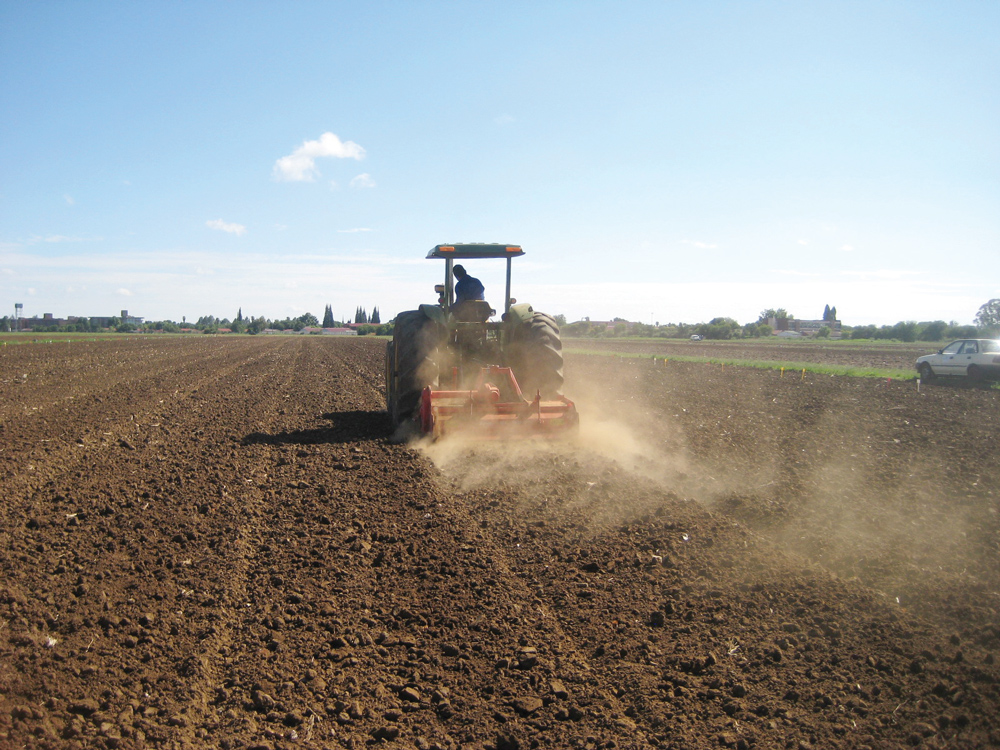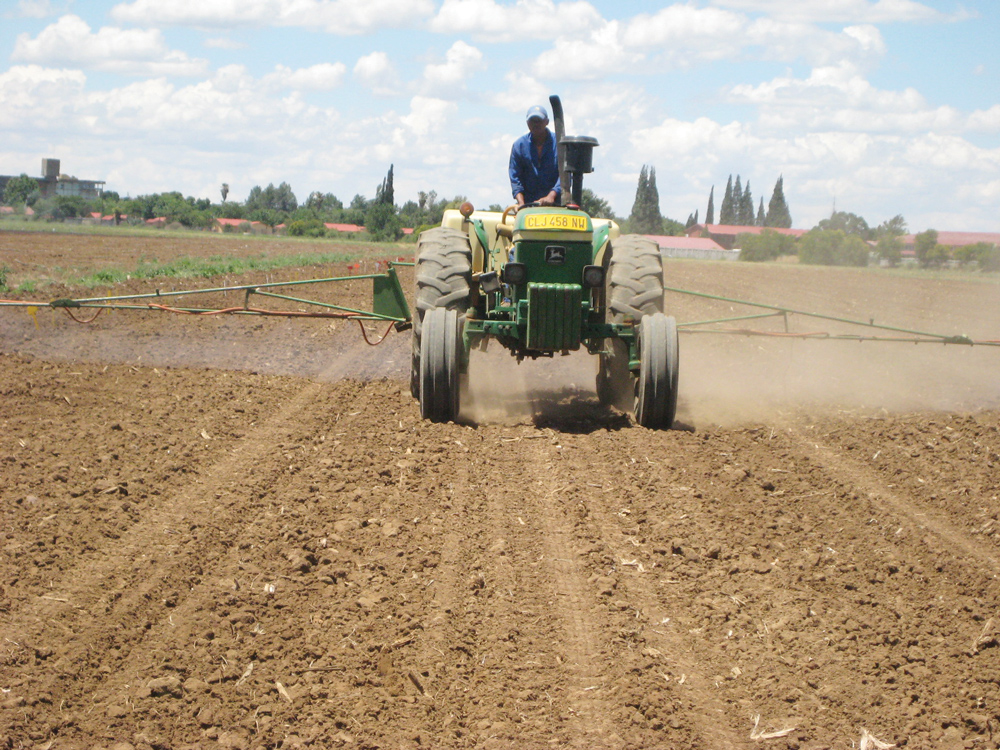December 2024
| Dr Nemera Shargie, ARC-Grain Crops, Potchefstroom |
 |
SORGHUM IS AMONG THE MAJOR TRADITIONAL FOOD CROPS IN SOUTHERN AFRICA. IN SOUTH AFRICA, DRYLAND GRAIN PRODUCTION IS IDENTIFIED AS ONE OF THE KEY PRIORITIES TOWARDS FOOD SECURITY. SORGHUM REQUIRES LOW NUTRIENT INPUTS AND FAR LESS WATER THAN COMPARABLE CROPS SUCH AS MAIZE, AND ITS UNIQUE BIOLOGY MAKES IT POSSIBLE TO PRODUCE GOOD YIELDS, EVEN UNDER DIFFICULT CONDITIONS.
As water resources become more constrained and as the fast-growing human population requires more productivity from less arable land, sorghum is a crop poised to meet the growing needs of both traditional agriculture and bio-industrial processes. The causes of low sorghum production in South Africa are a lack of technology, the insufficient use of fertilisers, low soil water content, soil erosion, environmental stresses and poor market infrastructure.
Grain sorghum and maize are comparable in costs of production – therefore, the growing environment is the largest determining factor for choosing which one to grow. Sorghum requires less water than maize, so it is likely to be grown as a replacement for maize and produce better yields than maize in the hotter and drier areas of South Africa.

Seedbed preparation before planting.
CLIMATIC REQUIREMENTS
This crop can withstand high temperatures better than most other crops, but extremely high temperatures during flowering may be harmful. For optimum production, grain sorghum requires a maximum daily temperature of 25°C to 30°C.
Low temperatures reduce yields. It is therefore important that the planting dates are chosen in such a way that the crop attains maximum advantage of prevailing climatic conditions. The sorghum plant is very sensitive to frost, so crop maturity should be achieved before the first frost occurs.
MOISTURE/RAINFALL REQUIREMENTS
Grain sorghum is a tropically adapted plant that can survive during drought. Because of its ability to survive in unfavourable conditions, sorghum is often relegated to poor soils and poor management.
However, to be profitable, a sorghum crop needs sufficient water at the critical stages in its development. Adequate soil moisture at planting helps to assure uniform stands and contributes to early plant growth. If the seedbed contains sufficient moisture for good germination and early plant growth but subsoil moisture is lacking, water may be supplied by irrigating after emergence.
Encourage deep rooting by maintaining only moderate soil moisture levels during early vegetative growth. Whether irrigating before or after planting, apply no more water than required to fill the effective root zone.
In South Africa, sorghum is produced on a wide range of soils, and under fluctuating rainfall conditions of approximately 400 mm in the drier western regions to about 800 mm in the wetter eastern regions.

Pre-emergence herbicide spraying operation.
SOIL REQUIREMENTS
Deep, well-drained, fertile sandy-clay loam soil with a pH of approximately 5,0 (KCl) is an ideal soil type. However, grain sorghum adapts to a wide range of soils, provided the soil fertility is reasonable. Grain sorghum can be grown with greater success than maize on less fertile soils, shallow soils, heavy turf soils and soils subject to waterlogging.
Heavy soils produce the best yields in good seasons, but during times of stress (such as waterlogging) sandier soils are better. However, during a normal drought grain sorghum will still produce satisfactory yields on soils with a clay content of more than 50%, whereas maize will yield very little grain.
The sorghum root system is very fibrous, and can extend to a depth of up to 1,2 m. The plant finds 75% of its water in the top metre of soil, and because of this, in dry areas, the plant’s production can be severely affected by the water-holding capacity of the soil.
PRODUCTION
Soil preparation
Soil preparation should be similar to that of maize, but as the seeds are smaller, the seedbed, particularly on clay soils, must be finer to ensure good germination and the soil crust that may develop after planting must be broken to enable the young seedlings to emerge.
Planting date
Planting can start when the soil temperature is at least 15°C and the soil moisture is sufficient for germination. In most areas planting should take place during late October to mid-December. It is impossible to determine the outcome of climatic conditions during a specific growing season at the outset of the season. However, one can choose a planting date taking long-term climatic conditions into consideration.
Time planting so flowering avoids the hottest, driest period of the summer. Utilising several planting dates is recommended to spread the risk of one planting date flowering during a stress period.
Fertilisation
The nutrient requirements of grain sorghum are equivalent to these of maize, and roughly the same quantities of nitrogen (N), phosphorus (P) and potassium (K) are removed from the soil by these two crops. However, grain sorghum can utilise soil nutrients more efficiently than maize.
Therefore the recommendations for maize may also be applied to grain sorghum, except for slight adjustments depending on the soil and moisture conditions of the farm. As in the case of maize, the fertilisation programme must be based on the projected yield and a reliable soil analysis.
Harvesting
CONTROLLING WEEDS, DISEASES AND PESTS
Weed control
As the sorghum plant grows very slowly in the early stages, it can easily be smothered by weeds. The young sorghum seedling is not capable of competing with weeds. Therefore it is important that weeds are effectively controlled, particularly in the early stages (during the first six to eight weeks after planting). A well-prepared seedbed largely prevents weeds from becoming a problem soon after planting.
Weeds can be controlled by mechanical, cultural practices or chemical methods. Wild sorghum in a sorghum field can only be controlled mechanically or by hand hoeing.
Major insects
Insect problems in sorghum vary from field to field, from season to season, and in different parts of the country. Stalk borers (both African and spotted) can attack grain sorghum and cause serious damage. The control measures for both pests are the same, although spotted stalk borers are more difficult to control.
In both cases, early October and late December/January plantings are most susceptible to infestation and yield reductions. Chemical control measures are necessary for the well-timed control of both pests. It is recommended that control measures for both insect pest species should be applied when a maximum of 10% plants in a sorghum field are infested.
Diseases
Diseases of sorghum vary in severity from one place or field to another and from season to season, depending upon the host plant’s resistance, causal organisms and the environment. The total eradication of diseases in sorghum is not economically feasible, so growers must try to minimise their damage through an integrated disease management system.
These measures include:
The accurate application of herbicides, insecticides and fungicides are all methods that can be used to minimise losses from diseases.
Birds
Birds are a major cause of yield losses in sorghum. Varieties with a higher tannin content and growing the crop in large fields are solutions used to combat the birds.
Publication: December 2024
Section: Pula/Imvula